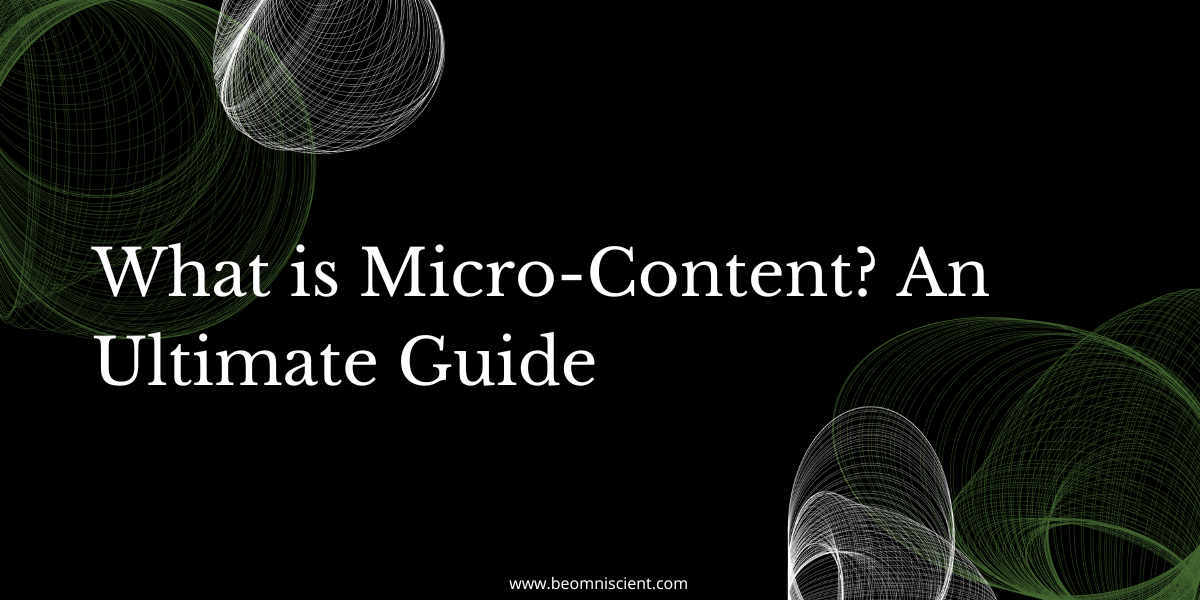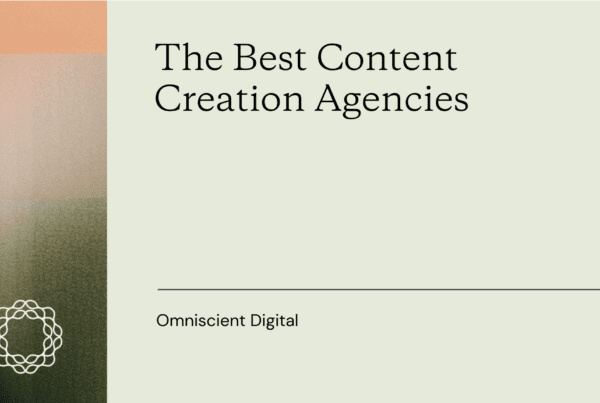
“How do I get more people to click on my content?”
Even if you’ve created a fantastic piece of buzzworthy content or thought leadership, the simple act of showing up on your audience’s radar–via inboxes, SERPS and social feeds–can be tricky in 2023.
The competition is fierce.
Just look at a few of these statistics:
- The average person receives 131 emails every day.
- 4.4 million new blog posts are published every day across all platforms.
- As of 2022, the rate of content creation on YouTube has grown to 500 hours per minute (30,000 per hour).
Does this mean that content marketing in 2023 is rigged? Quite possibly. Does it mean we should abandon all hope and pursue a different strategy instead? Not at all. The truth is that content marketing more effective than ever. All that’s changed is that there’s simply more white noise online.
If we want to get our content in front of the right people–we must learn how to effectively position ourselves in an utterly irresistible way.
Enter micro-content.
What is Micro-Content?
Micro-content is any short-form writing, picture or video that convinces readers to check out your long-form content. Its sole purpose is to pick out your target audience from the crowd and entice them to click on your stuff.
In the words of Jakob Nielsen—the UX designer who coined the phrase:
“[Micro-content] exists to encourage users to take some action, usually because they want to see an in-depth (fully-written) piece of content”.
It can convince your audience to take a range of different actions:
- Browse your website
- Click on your blog posts on Google
- Download your latest podcast episode
- Read your email newsletter
- Watch your company’s YouTube video
- And engage with all your other content marketing efforts
Examples of Micro-Content
Although Nielsen used Micro-content when referring to headlines, blog post summaries and abstracts–in 2023 the term is far more versatile.
Today, it’s understood to include email subject lines; social media posts; SEO title tags, meta descriptions and snippets. A general rule of thumb is that if it’s bite-sized content that can be consumed in under thirty seconds, it’s probably micro-content.
As Gary Vaynerchuk articulates in his updated definition:
“To me, the 60-second content [micro-content] is the marketing. It is the amuse-bouche. It is the setting up to the longer form… The marketing is there for you to go deeper.”
[Image Caption: This type of content is the perfect way to stand out in a world of ever-declining attention spans on social media.]
How to Create Good Micro-Content
After studying the strategies of 30+ top content creators–like Gary Vee, Grant Cardone, Codie Sanchez and Hubspot–I’ve identified three crucial traits of killer click-worthy micro-content.
Here they are:
1. Front-Load Headlines (Relevant keywords + Search intent = Attention)
If we want to stop our readers from scrolling on their mobile devices–we must first hook their attention.
The easiest way to do this is by placing the most important information at the beginning–aligning our headline and the search intent of our audience.
According to eye-tracking research, most of us rarely read information online in a linear fashion. We often scan for relevance instead. This means that if your micro-content doesn’t make its value to the audience clear, they’ll gloss right over it.
By prioritizing the need-to-know information over the “nice-to-know” we stand the best chance of making a favourable impression.
[Image caption: Image credit: Nielsen-Norman Group]
(This technique is known as the “inverted pyramid method” (or the journalist method). The headline offers the context and the rest of the content sheds light on the details. )
This is relevant right throughout the customer journey, from the informational awareness stage to direct commercial intent:
Informational Intent:
There are several types of informational content:
- Addressing a prospect’s pain point (1)
- Offering a benefit (2)
- Sharing relevant news (3)
- Answering a prospect’s question (4)
Navigational Intent:
Prospects anticipating your content often prioritise identification over information. If they already trust your brand, vague headlines will only serve to confuse readers. Commercial Intent:
Commercial Intent:
When customers are ready to buy, they often want to do it immediately. Any friction will only serve to deter the sale.
2. Don’t Be Camera-Shy
When you think about your favourite content creators, who comes to mind?
I’ll wager a bet that it’s likely to be a personal brand.
Over the past few years, we’ve seen a huge shift from corporate content to influencer or “founder-led” content.
In fact, the data is fairly eye-opening: 61% of consumers trust influencer recommendations, compared to 38% who trust brand-produced content.
This trend is particularly evident when you compare how micro-content has evolved over the years:
It turns out that we’re psychologically wired to pay attention to visual cues. According to research, we’re 323% more likely to click on content with directions (like somebody pointing) and 38% more likely to get likes on a photo that includes a friendly face.
So while it may be tempting to hide behind a company blog or faceless social media account–remember that your personality may just be your best USP. As our social feeds continue to bombard us with an array of stimulating images, memes, gifs, infographics and short videos–the faces and voices we trust will reign supreme.
3. Scale Up Your Content Creation Efforts
Micro-content is a hit-or-miss game.
The timing has to be just right. The odds of reaching the right person, on the right platform, with the right CTA, at the right time are very slim. Therefore, similar to baseball, the more swings you take the better your odds of a homerun.
If you look at any of the top social media creators you’ll notice that they are prolific.
This doesn’t mean they’re creating new content every second. It means they’re always exploring new angles to promote long-form content.
[Image caption: We can repurpose long-form into a variety of short-form content for the top social media platforms like TikTok, LinkedIn, Instagram stories and YouTube.]
The secret to micro-content in 2023 is volume and experimentation. It’s the key to personalising our long-form content to each relevant target demographic. We can reach different marketing personas at different stages of the customer journey.
Why hinge the entire outcome of your long-form content on a single hook? Similar to A/B testing, it makes far more sense to create twenty and learn which one attracts the most attention.
As top micro-content creators like Beardbrand, Gary Vee and Alex Hormozi prove, achieving success has as much to do with the timing (i.e. volume) as it does quality. By creating a content marketing system, we stand a dramatically better chance of reaching our target audience when they’re most receptive to our message.
Conclusion
It’s easy to feel overwhelmed when creating micro-content. As content marketing becomes more saturated, we must work harder to stand out.
Just remember that micro-content is a gateway to your product-led content. Rather than try to attract the masses, stay focused on the prospects who’ll appreciate your long-form content.
At the end of the day, content marketing is a long game. So, we’re far better off prioritizing lasting relationships over short-term hype. Quality attention from the right audience is infinitely more valuable than giant swarms of generic traffic. Are you looking to build a rock-solid content strategy that prioritises revenue over low-quality traffic. Let’s talk!



